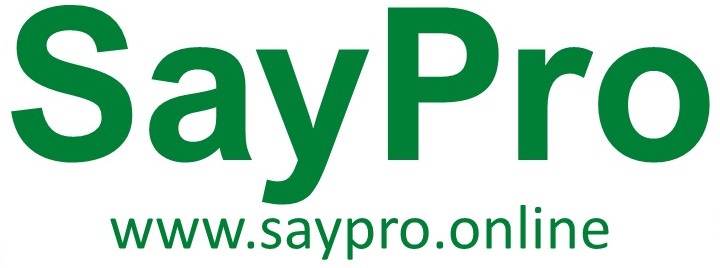SayPro educates students about impulse buying and the psychological cues that lead to unplanned purchases. Volunteers study how emotional states, visual stimuli, and product placement influence spontaneous shopping decisions. SayPro explores how urgency cues like “limited time offers” or “only 3 left” increase the likelihood of impulsive purchases. Students evaluate the impact of color, lighting, and music in retail environments. SayPro encourages students to research the connection between mood and spending. Through SayPro, volunteers learn to recognize the subtle yet powerful strategies marketers use to encourage impulse buying and how consumers can make more mindful choices.
SayPro helps students explore how digital platforms amplify impulse buying behavior. Volunteers analyze how in-app purchases, flash sales, and algorithm-driven recommendations increase temptation. SayPro trains students to assess interface designs that prioritize ease and speed over deliberation. Volunteers study mobile shopping behaviors and how one-click options reduce cognitive friction. SayPro emphasizes the need for responsible digital design and consumer education. Students work on projects that promote financial literacy and conscious consumption. Through SayPro, participants gain real-world insights into how digital convenience can often lead to impulsive financial decisions that may not align with long-term goals.
SayPro encourages students to investigate the neuroscience behind impulse decisions. Volunteers examine the role of dopamine, reward systems, and delayed gratification in purchase behavior. SayPro provides access to case studies, research, and behavioral models that explain why consumers often buy on instinct rather than need. Volunteers discuss strategies to reduce impulse buying, such as cooling-off periods and wishlist tools. SayPro promotes awareness campaigns that empower consumers to pause and reflect. With SayPro’s support, students help bridge the gap between psychological insight and consumer empowerment, fostering healthier, more intentional shopping habits.
SayPro partners students with economists, behavioral scientists, and UX designers to tackle impulse buying challenges. Volunteers develop educational workshops, financial wellness resources, and policy proposals. SayPro organizes community outreach programs that teach budgeting and responsible consumer behavior. Students also collaborate with retailers to design shopping experiences that reduce impulse triggers. SayPro ensures students apply their knowledge to real-life environments, shaping retail ecosystems that prioritize well-being. By volunteering with SayPro, university and college students play a vital role in transforming consumer culture toward greater mindfulness, transparency, and emotional awareness.
